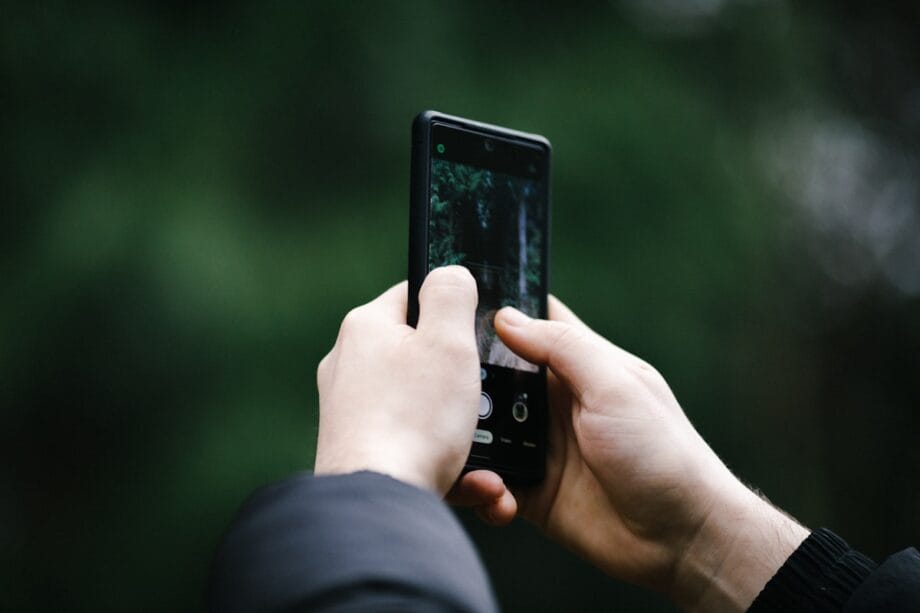During a recent fireworks display, I inadvertently left my mirrorless camera behind, and surprisingly, I felt no sense of loss.
Navigating a crowded, chilly park with two hyperactive toddlers in tow, my smartphone, which I had conveniently stashed in my pocket, emerged as the ideal option.
It was swift, lightweight, and most crucially, sufficient to capture the mesmerizing spectacle effortlessly.
Why Convenience Won on the Night With a Smartphone
Photographing fireworks is traditionally a formidable challenge, demanding meticulous preparation and patience—often necessitating a tripod, manual exposure settings, and acute timing. This occasion, however, saw me utilizing the dedicated Fireworks mode available on many contemporary smartphones.
This feature adeptly marries short and prolonged exposures, preserving trails, tempering highlights, and enhancing color vibrancy. With small hands to manage and glow sticks to navigate, the automation proved to be liberation rather than limitation.
The imperative of instant readiness cannot be overstated. As Ofcom reveals, 93% of adults in the UK possess a smartphone. When surrounded by a live audience that flickers in and out of darkness, the camera that powers on swiftly and focuses accurately is the one that seizes the moment.
Gone are the days of lens swapping and metering tests; it’s now a matter of aiming, tapping, and moving on.
How the Shots Compared in Real Life at the Event
The most remarkable aspect was the consistency observed across various focal lengths. The primary-wide camera functioned nearly as expected in low-light conditions, while even the 3x and 5–6x zoom modules delivered comparable color fidelity and exposure, resulting in markedly fewer out-of-focus shots than those captured by numerous compact setups during nighttime.
The bursts displayed highlights that were keenly preserved beneath the clipping threshold, and the black sky maintained its depth without devolving into a murky gray.
Were the resultant images impeccable? Not precisely. The trails of fireworks exhibited slight motion blur when panned too rapidly, and the steadier flames of the bonfire introduced some lens flare.
Nonetheless, the files were polished enough for immediate sharing, devoid of any color correction—a stark contrast to the typical hour spent in Lightroom fine-tuning shadows, white balance, and micro-contrast for a mirrorless RAW collection.
The Tech Doing the Heavy Lifting Behind Fireworks Photos
Modern smartphones employ a multi-frame capture technique, aligning an array of exposures assisted by gyro data and optical stabilization, subsequently blending them through selective denoising and tone mapping.
This principle underpins Night modes and astrophotography features from leading companies such as Google and Apple, now adeptly applied to fleeting, high-contrast lighting scenarios. The outcome: an enhanced sense of liberty without the encumbrance of a tripod.
Innovations in sensors and optics are paramount as well; some impressive 50MP 1/1.3–1/1.4-inch sensors are paired with rapid lenses and telephoto modules that perform admirably, ensuring that mid-zoom shots retain their integrity when the shutter is pressed.
Independent evaluators like DXOMARK have documented a consistent enhancement in low-light capabilities across several hardware generations, evident when one is tasked with both composition and child supervision.
The Tradeoffs I Accepted by Leaving the Camera at Home
While mirrorless cameras continue to excel in sharpness, flare management, and extensive RAW capabilities, had I anchored myself with a tripod and meticulously configured a tight manual focus at infinity using an exposure of 2–4 seconds at ISO 100, the results may have featured cleaner trails and improved gradients.
However, this approach demands time, space, and a level of control that did not align with the evening’s dynamics.
What my smartphone provided was a reassuring certainty. No fumbling through menus in the dark. No missed moments due to focus adjustments.
The computational prowess absorbed the variables, allowing me to maintain presence. In this context, the compromise on pixel integrity appeared a prudent choice.
Practical Tips If You Skipped the Camera Bag
- Arrive early and position yourself windward to prevent smoke from obstructing the frame.
- Utilize the standard wide camera for stability; consider the initial optical zoom option for tighter bursts, but avoid venturing into digital zoom.
- If your phone permits, lock focus and exposure, and brace against a railing or tree for steadier shots.
- Disable harsh HDR filters that can dull the night sky; capture a short burst as the shell bursts to achieve full trails.
- If your device offers Fireworks or Long Exposure modes, experiment with them; for manual settings, opt for a shutter speed of 1–2 seconds and the lowest ISO, maintaining color integrity.
- Perform quick edits post-capture—a touch of contrast and a hint of dehaze can markedly elevate your images.
The Bigger Picture on Smartphone Versus Mirrorless

Data from the industry clarifies why this experience felt effortlessly seamless. The Camera & Imaging Products Association (CIPA) has noted a sustained decline in dedicated camera shipments from their peak in the early 2010s, as smartphones increasingly dominate casual photography.
On platforms like Flickr, smartphones consistently outshine traditional cameras, underscoring their prominence in everyday photographic contributions.
This doesn’t diminish the value of mirrorless systems; instead, it recontextualizes their application. I remain eager to pack my gear for portrait work, travel endeavors, and those tranquil evenings devoted to achieving perfection.
However, amidst a jubilant crowd, a stroller, and a perpetually transforming sky, leaving the mirrorless camera at home proved not merely practical but instinctively correct.
Ultimately, the resulting photographs convey all that needs to be said: vibrant, well-balanced, and flawlessly executed without missing a moment.
Convenience didn’t merely prevail; it rendered the evening safer, more enjoyable, and infinitely more fun. I harbored no regret over this choice, and I would embrace the opportunity to repeat it without hesitation.
Source link: Findarticles.com.






